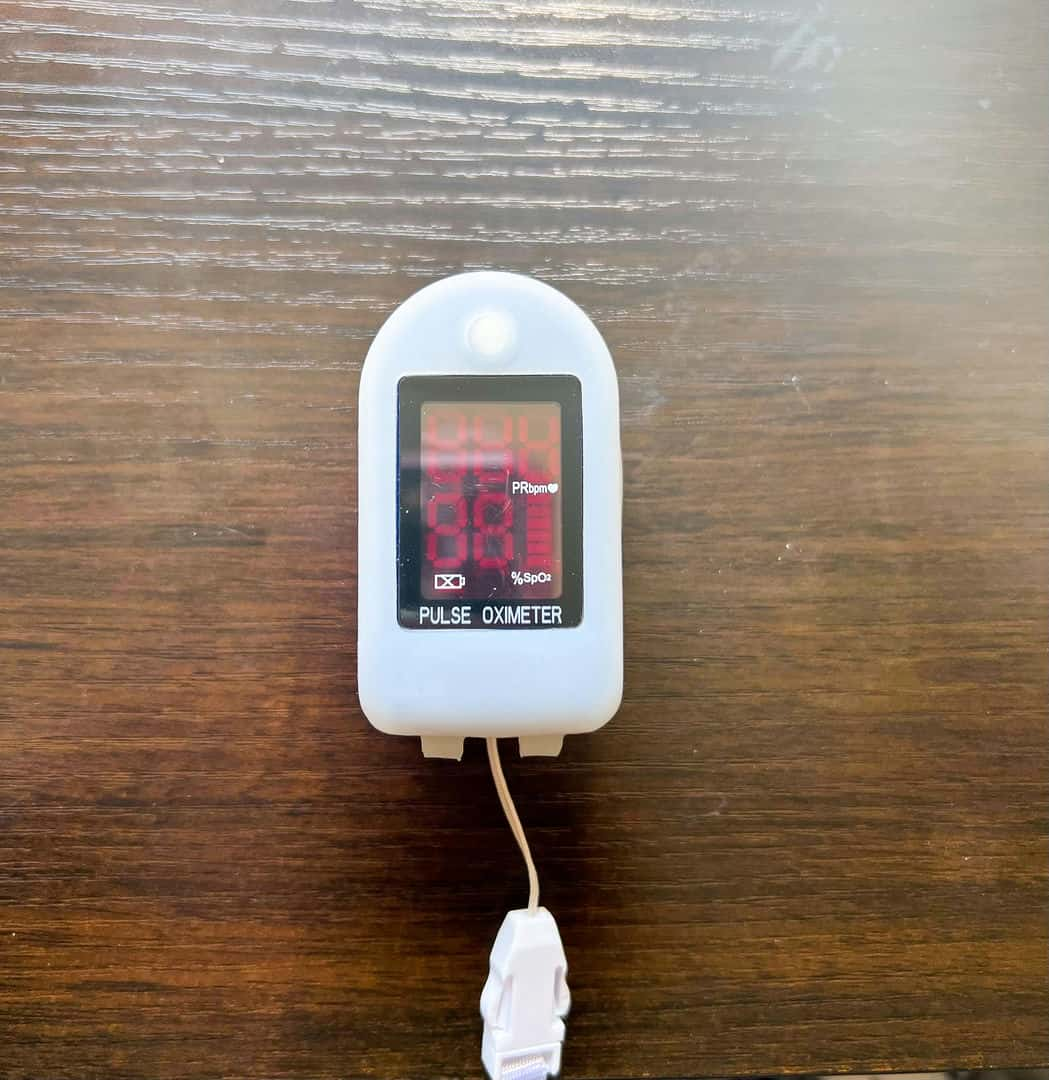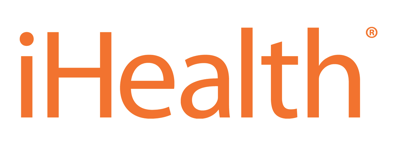Best Pulse Oximeters for Older Adults and Caregivers
Best Pulse Oximeters for Older Adults and Ca...
Key Takeaways
- Finger pulse oximeters measure the amount of oxygen in the bloodstream. Most models will also display your heart rate, pulse strength, and other vitals.
- These devices gained popularity during the COVID-19 pandemic. However, they can— and should be—used by most individuals with lung disease, congestive heart failure, asthma, sleep apnea, and other conditions.
- A low oxygen level may indicate hypoxemia, a potentially life-threatening condition that requires emergency care. Pulse oximeters can also detect and measure high oxygen levels in those using supplemental oxygen.
- FDA-approved pulse oximeters are generally more accurate than their over-the-counter (OTC) counterparts. But even so, some of the best OTC oximeters often work just as well as a medical-grade device.
While the COVID-19 pandemic made more people aware of the use and accessibility of pulse oximeters, if you’ve been in a hospital before you might have had one clipped to your finger before to measure your oxygen levels. Having low oxygen levels in the blood can be a sign of a number of disorders, including congestive heart failure or pneumonia. That’s why we’ve researched and reviewed nine of the best pulse oximeters, so if you’re experiencing symptoms of low blood oxygen, or have already been diagnosed with a condition that requires one, you can find the right one.
Having low blood oxygen levels is a health condition called hypoxemia, and it can be acute or chronic, depending on its underlying cause. According to the Cleveland Clinic, symptoms can range from mild to severe and may include headaches, wheezing, breathing problems, heart palpitations, and coughing. Some people may also notice a bluish discoloration of the skin and fingernails, which is due to a lack of oxygen in the blood.
Individuals with congenital heart defects, anemia, lung disease, and other conditions are more likely to experience this problem. In such cases, it makes sense to use a pulse oximeter to check if there’s enough oxygen in your blood. This small fingertip device measures oxygen saturation (SpO2), giving you more control over your health. For example, people with asthma can use pulse oximeters to track their SpO2 levels throughout the day and request medical help if necessary (e.g., SpO2 levels below 92%).
Prescription oximeters are regulated by the U.S. Food and Drug Administration (FDA) and undergo extensive testing. These devices have low error rates (2%–3%) and can measure oxygen saturation levels of 70%–100%. Over-the-counter (OTC) oximeters don’t require FDA approval, but this doesn’t mean they are less accurate.
Both prescription and OTC pulse oximeters measure blood oxygen levels, pulse strength, and heart rate. If your SpO2 levels are constantly below normal values, your doctor may prescribe a portable oxygen concentrator to increase the amount of oxygen in your blood.
Why Would You Need a Pulse Oximeter?
Pulse oximeters may come in handy for those with asthma, heart failure, pneumonia, chronic obstructive pulmonary disease (COPD), and other conditions that can affect blood oxygen levels. In some cases, they may also be recommended for individuals who’ve had a heart attack and those diagnosed with lung cancer, according to the University of Rochester.
“Pulse oximeters are especially useful for anyone who has a lung condition that could affect their lungs’ ability to bring in enough oxygen,” said Dr. David Culpepper, an internal medicine physician and the Clinical Director of LifeMD. “Two examples would be emphysema or asthma. Such patients can use the pulse oximeter to see if they are getting enough oxygen. An asthmatic patient could use the data from the oximeter to determine if they need to use their inhaler.”
These devices are also useful for COVID-19 patients, athletes, and individuals traveling to high altitudes, noted the American Thoracic Society. For example, physically active older adults may use pulse oximeters during or after training to ensure their lungs can keep up with the demands of exercise.

Best Pulse Oximeters for Home Use
A pulse oximeter cannot replace medical advice, but it can be a valuable tool for those with lung or heart conditions. Ideally, you want to choose one that’s highly accurate and comes with handy features, such as a bright display, smartphone compatibility, and real-time updates. The device should also be easy to use and fit a variety of finger sizes. Its design, materials, and battery life matter too.
With that in mind, let’s take a closer look at some of the best pulse oximeters on the market and how to pick the right one for you. The models listed below—including those approved by the FDA—are available without a prescription.
- Best Value: Oxiline Pulse 7 Pro
- Best Smartphone Compatibility: iHealth Air Wireless Pulse Oximeter
- Best for Sports Enthusiasts: Zacurate 500DL Pro Series Pulse Oximeter
- Best for All Ages: Metene Fingertip Pulse Oximeter
- Best Digital Display: Insignia Fingertip Pulse Oximeter
- Best for Continuous Monitoring: Oxiline Pulse MD Pro
- Best for Wellness Monitoring: Wellue Fingertip Pulse Oximeter
- Best Basic: Walgreens Fingertip Pulse Oximeter
- Best Ease of Use: MIBEST OLED Finger Pulse Oximeter
- Price: $49
- Battery: 2 AAA batteries (included)
- FDA-approved: Yes
Why We Like It: This FDA-approved pulse oximeter weighs only 0.2 pounds and features a compact design and highly sensitive nanosensors for quick, accurate results.
Oxiline Pulse 7 Pro can measure blood oxygen levels, heart rate, and perfusion index (PI), or the ratio of pulsatile blood flow to non-pulsing blood, in seven seconds or less. The results are displayed in red digits on a large, bright screen for easy readability. All you need to do is press the power button and attach the oximeter to your finger. The device will turn off automatically after each use.
What makes the Pulse 7 Pro stand out is its high accuracy and intuitive interface. Even though it lacks smartphone connectivity, it’s quick and easy to use, making it ideal for when you’re short on time. The batteries can last for six months or longer, so you won’t have to replace them anytime soon.
This compact device also comes with a 30-day money-back guarantee and a lifetime warranty. As of writing this, it has nearly 24,000 positive customer reviews on the manufacturer’s website and is rated 4.91 out of 5 stars. Oxiline doesn’t have many reviews on third-party review sites, but most complaints that can be found are related to customer service rather than the actual products.
Pros
-
High-contrast LED display
-
Fast results
-
Accurate readings
-
Easy to use
-
Long battery life
-
Lifetime warranty
Cons
-
Some users have difficulty attaching the lanyard to the device
-
The screen is prone to scratches
-
Some buyers were not satisfied with customer service
“When you are on oxygen, it is sometimes hard to recognize if you need more. I have been diagnosed with mild COPD, so am not on oxygen continually. I needed help recognizing when I needed to have more. This handy little gadget can tell me within 2+ or 2- my oxygen level. Easy to read, lit-up display. Almost like being in the doctor’s office.”
Arlene Rasmussen, Oxiline
- Price: $59.99
- Battery: Built-in rechargeable lithium-ion battery
- FDA-approved: Yes
Why We Like It: The Wireless Pulse Oximeter from iHealth Air features a minimalist design, with a large, bright display and user-friendly controls. It’s wireless, compact, and accurate, making it ideal for everyday use.
The iHealth Air Pulse Oximeter measures blood oxygen saturation, heart rate, and perfusion index (PI). This smartphone-compatible device works with the iHealth mobile app and can be used during physical activity. It’s also FDA-approved and meets the compliance requirements set by the Health Insurance Portability and Accountability Act (HIPAA).
With this pulse oximeter, you can view your readings on any mobile device and save them in the iHealth app. Its SpO2 measuring range is 70% to 99%, with an error rate of 2%. The battery life isn’t the best, but you can charge the device as needed. Plus, you won’t have to spend extra on single-use batteries.
As far as usability goes, the iHealth Air Pulse Oximeter couldn’t be easier to use. All you need to do is clip it to your finger and then check your results on the device screen or via the iHealth mobile app. The product has a 4.6 out of 5 rating on Google and 4.5 out of 5 rating on Amazon, and most customers agree that it’s fairly accurate and easy to operate. It connects seamlessly to smartphones, provides quick results, and the readings are clear.
Pros
-
Large display
-
Bluetooth connectivity
-
Smartphone-compatible
-
Accurate readings
-
Easy to use
-
Clinically tested
-
Stores up to 9,999 readings in the iHealth app
Cons
-
Short battery life
-
Some users find the charging cable too short
“At first I was really skeptical about the ‘invisible screen’ design of this considering almost every other PulseOx unit out there has a tiny matrix display. I thought this would be more limited. How wrong I was! I actually now *prefer* this over my other units! Much larger display, much brighter and easier to read (no glasses needed), and incredibly fast at reading too! It beats some other units that cost a lot more. Add in that it’s not only wireless so it records the data to your phone, but it just looks freaking cool too and you have an absolute winner. Couldn’t be happier, and you won’t be either.”
Mark D., Amazon
- Price: $22.95
- Battery: 2 AAA batteries (included)
- FDA-approved: No
Why We Like it: The Zacurate 500DL makes it easy to check your oxygen saturation and heart rate during exercise. This small-yet-durable device is suitable for children and adults alike, offering accurate results in 10 seconds or less.
This finger pulse oximeter appeals to sports enthusiasts, featuring a high-contrast LED screen and user-friendly controls. It measures blood oxygen levels, as well as heart and pulse rate, with a mean deviation of +/-2%. The digits on the screen are visible in the dark, which allows you to check your reading when jogging or hiking at night.
Another notable feature is the silicone finger chamber. This piece is made from hypoallergenic, latex-free materials and can accommodate a variety of finger sizes. The device also comes with a lanyard for increased convenience.
The Zacurate 500DL Pro Series can measure oxygen saturation levels up to 100%. It’s also one of the few pulse oximeters suitable for pilots and aviation enthusiasts. It has a 4.6 out of 5 score on Google, and customers who purchased it from Walmart say it’s fast, accurate, and easy to read. They also find the device easy to carry around due to its compact size, lanyard, and protective cover.
Pros
-
Designed for adults and children over 12
-
Measures SpO2 levels of up to 100%
-
Large LED display visible in the dark
-
Snap-off battery cover
-
Low error rate
-
Quick results
-
Works at higher altitudes
-
Includes a lanyard and silicone cover
Cons
-
Relatively short battery life (30–40 hours)
-
The screen doesn’t flip
“I am a part-time EMT; I took this pulse ox to my full-time job at a bank and asked different co-workers to let me ‘test’ it on them. Everyone who agreed to be my ‘guinea pig’ was extremely impressed and some even asked where they could get one.”
Ldhennigan, Walmart
- Price: $10.99
- Battery: 2 AAA batteries (included)
- FDA-approved: No
Why We Like It: This fingertip oximeter from Metene is suitable for all ages, offering quick results. You can use it at home or on the go to measure your oxygen saturation, heart rate, and pulse strength within seconds.
The Metene Fingertip Pulse Oximeter provides accurate results within eight seconds. A notable feature is the built-in alarm, which lets you know when your readings are off the chart. What’s more, you can use the device at night thanks to the high-contrast screen.
This finger pulse oximeter isn’t FDA-approved, but it has a high accuracy rate, according to most customers who ordered it from Amazon. Plus, it works just as well for office workers as it does for athletes and sports enthusiasts. You may also use it at high altitudes, like during a flight.
The device also comes with a belt loop and neck cord so you can keep it on hand wherever you go. Its sports design is just perfect for gym-goers, cyclists, and mountain climbers.
As of today, the Metene Fingertip Pulse Oximeter has over 1,000 reviews on the manufacturer’s website and a rating of 4.5 out of 5. Most customers find it easy to use, saying that it works just as well as medical-grade pulse oximeters. Buyers are also satisfied with its accuracy and compact size, and some were told by their doctors to choose it over other models. A small number of users say it provides slow or inconsistent readings, but most reviews are positive.
Pros
-
Can accommodate fingers of all sizes
-
Made from durable ABS plastic
-
Modern, edgy design
-
Quick, accurate readings
-
LED night mode
-
Easy-to-read display
-
Built-in alarm
-
Battery indicator
-
Neck cord, belt loop, and other accessories included
Cons
-
It may take several tries to get an accurate reading
-
The alarm cannot be turned off
“This product has been a wonderful tool for our medicine cabinet. It slides right on your finger and it’s easy to use. Sometimes it takes longer than expected to receive my reading, but not too long. The display is easy to read, and I like how it measures your pulse and your oxygen level.”
Wendy, Metene
- Price: $39.99
- Battery: 2 AAA batteries (included)
- FDA-approved: No
Why We Like it: Featuring a digital display with 10 brightness levels, the Insignia Pulse Oximeter can be used anytime, day or night. Its compact size allows for easy transportation, while the battery indicator comes in handy when you’re about to leave home.
This finger pulse oximeter from Insignia comes with a large screen, four display modes, and multiple brightness levels. Like other products on our list, it measures blood oxygen saturation, perfusion index, and pulse rate. What makes it stand out is the digital display and anti-motion technology.
The device shuts down automatically after each use, which helps preserve the battery life. You can also check your readings in the dark and it can be used during exercise. The results are fast and accurate, and you can even flip the display.
Most consumers who purchased it via BestBuy say it’s so easy to use that you don’t even need to read the instructions. With a rating of 4.7 out of 5 and over 130 five-star reviews, it seems like a good choice for the average household. Buyers agree it has a surprising number of features and provides consistent readings, and many rely on it during exercise or when traveling. Some bought it for family members with COPD or COVID-19, and they say it’s quick, accurate, and easy to read.
Pros
-
10 brightness levels
-
Suitable for an active lifestyle
-
Flippable screen
-
Easy to store and carry around
-
Anti-motion technology
-
Lanyard included
-
One-year warranty
Cons
-
May not work on small fingers
“I know it says ‘not for medical use,’ but I’ve been using this on my family whenever they’re sick just to make sure things are good, and it’s amazing. I didn’t know it would also read your BPM. Also love the fact that it reads pretty fast.”
Steph, Insignia
- Price: $119.00
- Battery: 2 AA batteries (included)
- FDA-Approved: Yes
Why We Like It: Packed with innovative features, the Oxiline Pulse MD Pro is a good choice for nurses, caregivers, and just about anyone looking for a cutting-edge pulse oximeter. This FDA-approved device boasts a large display and VTEC MD sensors for quick, accurate readings, plus customizable alarms and audible feedback.
Featuring a large 2.75-inch screen, this medical-grade device makes it easy to check you or your patients’ oxygen levels, perfusion index, and heart rate, even in low-light conditions. Plus, it works with both Apple and Android devices and allows for continuous monitoring.
The readings are stored in the Oxiline Health app, which enables users to track and compare their results over time. You also have the option to export your data in PDF or CSV format and discuss the results with your healthcare provider.
Unlike most pulse oximeters, the Oxiline Pulse MD Pro doesn’t have a finger chamber on the data unit. Instead, a cable connects to a fingertip attachment that uses advanced sensors to determine oxygen saturation and other vitals. The device also features a built-in alarm system that can be customized based on your needs.
As mentioned earlier, some customers are not satisfied with Oxiline’s customer service, but seem to be happy about the products purchased. The Pulse MD Pro has a 4.8 out of 5 rating on Oxiline’s website and no complaints on the manufacturer’s website, and there are minimal reviews of the brand found on third-party sites. Most buyers, including several medical professionals, say it’s superior to other models because of its high accuracy, built-in alarm, and digital features.
Pros
-
OLED display
-
VTEC MD sensors for superior accuracy
-
Suitable for 24/7 use
-
Provides audible feedback
-
Bluetooth connectivity
-
Long battery life
-
Custom alarms
-
Compact and well-built
Cons
-
The alarm volume cannot be changed
-
Some consumers find the device bulky
“Due to my father’s long battle with COVID, a regular pulse oximeter would always give false readings or wouldn’t give him a somewhat accurate reading, so a friend told me about this one—and it works great! It picks up his pulse and gives us an accurate reading every time! I would definitely recommend it!”
Cisco, Oxiline
- Price: $39.99 (Bluetooth version)
- Battery: 2 AAA batteries (included)
- FDA-approved: No
Why We Like It: With its large display and built-in memory, the Wellue Fingertip Pulse Oximeter makes it easy to check and compare your readings. Plus, it’s lightweight and comes with all sorts of helpful features, such as audio and visual alerts.
This smart device will not only measure your pulse rate and oxygen levels but also store your data automatically. Plus, there’s no need to connect it to a mobile app to monitor and compare the results. Its high-contrast display with large digits allows you to view your readings even in bad light conditions.
The Wellue Fingertip Pulse Oximeter can measure blood oxygen saturation levels between 35% and 100% within seconds. You also have the option to customize the measurement mode for you or your loved ones and adjust the alarm limits as needed.
The product has nearly 8,500 positive reviews on Amazon and a rating of 4.7 out of 5. On Walmart’s site, customers gave it a 4.6 out of 5 rating and left mostly positive reviews. Buyers say it’s great because of its accuracy and the ability to save your last readings, making it easy to see how your oxygen levels fluctuate over several days. What’s more, the results are quick and fairly consistent—and there’s the option to transfer your data to a spreadsheet and show it to your doctor.
Some buyers were not satisfied with the company’s return policy and customer service, according to Trustpilot. Others, however, say that shipping was fast, and they didn’t encounter any issues
Pros
-
Can automatically store your last 12 readings
-
Provides accurate results
-
Customizable menu and alarms
-
Spot check mode
-
Easy-to-ready display
-
Suitable for adults and children over age 12
-
No setup required
Cons
-
The screen doesn’t rotate
-
May not work on narrow fingers
“After putting in the batteries, it’s ready to go. I like the pulse graph on the screen while it is reading. I also appreciate the diagnosis that appears after you take it off the finger. Kind of like a second opinion just in case you were skeptical of your own judgment.”
Dean K., Amazon
- Price: $39.99
- Battery: 2 AAA batteries (included)
- FDA-approved: No
Why We LIke it: The Walgreens Fingertip Pulse Oximeter can be a good choice if you want a more basic option with no frills. It’s compact, lightweight, and sturdy, which makes it ideal for recreational use.
This pulse oximeter from Walgreens is designed to measure blood oxygen levels and heart rate. While it’s not as compact as other models, it feels comfortable against the skin due to its soft silicone padding. Users can adjust the brightness, rotate the screen, and turn on the device with the click of a button.
Its accuracy is quite impressive, though it takes some time to get your readings. Most consumers also appreciate its ease of use, which makes it ideal for those with limited technical knowledge. The slip-resistant clip and other features, such as the large HD display, are a nice bonus too.
This easy-to-use device has a rating of 4.5 out of 5 and over 3,600 positive reviews on Walgreens. Some customers said it works perfectly, while others said they got inconsistent readings. However, most buyers agree that it provides accurate readings most of the time, but it’s important to fit it properly around your finger and make sure your hands are warm.
Pros
-
Adjustable brightness
-
Automatic shutdown
-
Easy to operate
-
No-frills design
-
High-contrast display
-
Lanyard and carrying case included
-
Accurate readings
Cons
-
A little bit slower than other models
-
May not start working right away
“I’m a medical professional, and this pulse-oximeter is pretty close to the reading of the ones for professional use, usually the same or varying by one point. It’s a little slower than the medical facility ones, but worth it for the price.”
Glenda Kovach, Walgreens
- Price: $24.95
- Battery: 2 AAA batteries (included)
- FDA-approved: No
Why We Like It: This dual-color pulse oximeter works straight out of the box, striking the balance between design, functionality, and innovation. Plus, it’s suitable for adults and children alike, offering quick, accurate readings.
The MIBEST OLED Finger Pulse Oximeter features a patented display for clear readings from any position. It has a battery indicator, 10 levels of adjustable brightness, six display modes, and large digital numbers for easy readability.
This compact device can measure blood oxygen saturation and pulse rate. It also displays a pulse bar graph, which offers a graphical representation of your heartbeat. What’s more, it comes with an advanced SpO2 sensor and smart chip for accurate measurements.
The pulse oximeter from MIBEST has a 4.7 out of 5 rating and over 16,200 customer reviews on Amazon. Buyers who ordered it via the manufacturer’s website left nearly 1,600 positive reviews. Most shoppers are satisfied with its clear, bright screen and ease of use, as well as its modern design. The readings are comparable to those provided by medical-grade devices, but you may need to take multiple measurements to get accurate results.
Pros
-
One-button operation
-
Easy to use and read
-
Adjustable brightness
-
High-contrast OLED display
-
Automatic shutdown
-
Designed for all ages
-
Includes a neck lanyard
Cons
-
Some users say it may not work properly on darker skin pigment
-
Pulse readings are not always accurate
“We love this device. It was simple to assemble (i.e. insert the battery) and simple to operate. Slip in your finger, hit the button, and read the result. The price was modest. It does not freeze your pulse number but alters it as you relax (or move about). It is easy to read. I have no criticism whatsoever.”
Richard B. Schwartz, Amazon
How to Use a Finger Pulse Oximeter
Pulse oximeters work by sending wavelengths of infrared light through your finger, toe, or earlobe to a photodetector. This allows the device to measure the amount of oxygen in your blood. The test is quick and painless and can be performed anytime, anywhere.
If you have never used a finger pulse oximeter, take these steps to get started:
- Wash your hands with warm water and soap
- Turn on the device
- Remove nail polish from the finger you want to use
- Slip your index or middle finger inside
- Keep your hand still and below chest level
- Wait until the numbers on the screen stop changing and then check your reading
Generally, it’s recommended to place the device on the finger next to your thumb on either hand. However, one study found that SpO2 measurements are most accurate for the right middle finger or thumb. If you use a quality device, you should get similar values—regardless of which finger is scanned.
Like most electronic devices, finger pulse oximeters have their limitations. For example, the FDA states that people with thick or dark skin may get inaccurate readings. The same can happen if you’re a cigarette smoker or have circulatory problems. Also, note that nail polish and artificial nails can block the infrared light emitted by the device, affecting your results.
Tattoos may influence the accuracy of your readings, too, but more research is needed in this area. If you have a tattoo on your index or middle finger, place the device on other fingers or choose a model with ear or toe sensors.
Our Verdict
Finger pulse oximeters come in all shapes and sizes, making it easy to find the right one for you or your patients. Some are more suitable for sports enthusiasts, while others appeal to children or older adults. If you want a device that works with your smartphone, the iHealth Air Wireless Pulse Oximeter can be a good choice. Other models, such as the fingertip pulse oximeter from Wellue, can automatically save your data without the need for a smartphone or mobile app.
The Oxiline Pulse 7 Pro is our favorite pick because of its ease of use, large bright screen, long battery life, and high accuracy, but other models work just as well. It all comes down to what you’re looking for. The Oxiline Pulse MD Pro, for example, is best for continuous monitoring, but you may want to purchase a more basic model, like the Walgreens Fingertip Pulse Oximeter. Research your options, check out our reviews, and choose a device that meets your individual needs.
Why Trust Us?
The AgingInPlace.org team researches, analyzes, and tests health products to help older adults make better decisions as they age. We’re committed to bringing you the most accurate information, based on our in-depth research. During the research process for reviewing pulse oximeters, we:
- Spent hours researching pulse oximeters brands and models
- Consulted medical experts and journals
- Studied the user experience through insight from professionals, user reviews, and third-party research
To provide the most fair and objective reviews and comparisons, we considered these factors in the review:
- Unit weight
- Battery life
- Display quality
- Price
- Accuracy
- Ease of use
- Smartphone compatibility
- Measurement speed
- Range of measurements offered
- Result delivery
Our team monitors and regularly updates information to ensure relevance and reliability throughout all of our content. Many products and services featured on AgingInPlace.org will play a crucial role in your daily life. As these products should help enhance aging at home, we work to uncover as much as possible about the products and services we review. We also consult occupational therapists, audiologists, geriatricians, respiratory therapists, professional adult caregivers, and other experts in the field to ensure we’re providing the most accurate, helpful information.
Frequently Asked Questions
-
Normal pulse oximeter measurements are 95% or higher for healthy people and around 90% for those with sleep apnea or chronic lung disorders. To stay on the safe side, call a doctor if your blood oxygen levels fall below 95%.








